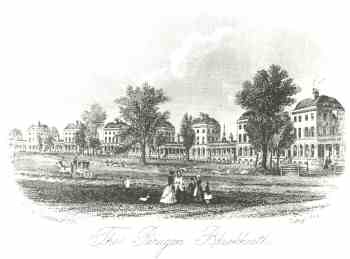Contents
Blackheath: A middle class estate of the 18th and early 19th centuries
by Neil Rhind
Cator Estate
The sale in 1783 of Sir Gregory Page’s grand mansion of Wricklemarsh and its attached 250 acre parkland, on the south east corner of the Heath, to timber-merchant John Cator for a miserable £22,250, helped prepare the ground for the next big change to the Blackheath suburb – but it was a process which took over 40 years. Cator (1728 - 1806) offered a chance in the early 1790s to architect Michael Searles, to develop the Heath frontage of the old Page estate. Cator arranged for the unwanted mansion to be demolished for the value of its materials, but he did not wish to build himself a house here – he enjoyed a perfectly good one at Beckenham.
Searles (1751 - 1813) obtained consent from Cator to design and build a housing scheme. It consisted of a 14-house four-storey crescent called The Paragon, and six more detached or semi-detached houses on what became South Row. The crescent, erected to provide high-class dwellings to rich gentlemen, was completed over the years 1794 - 1805, despite Searles' business failure. It was restored in the years 1945 - 1953 after bad war damage, and survives today as one of London’s finest architectural compositions.
